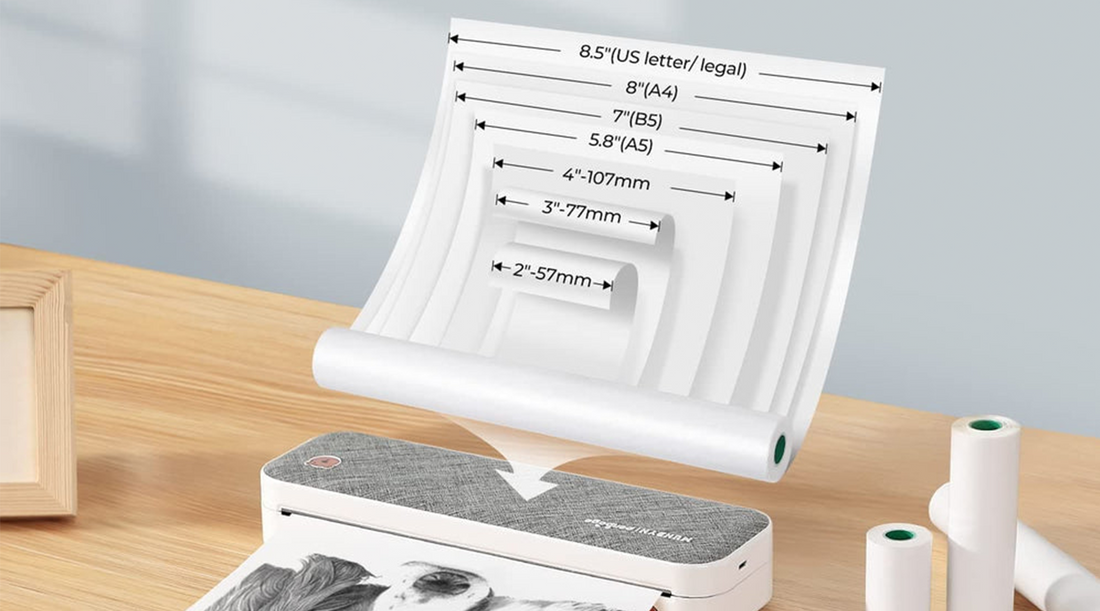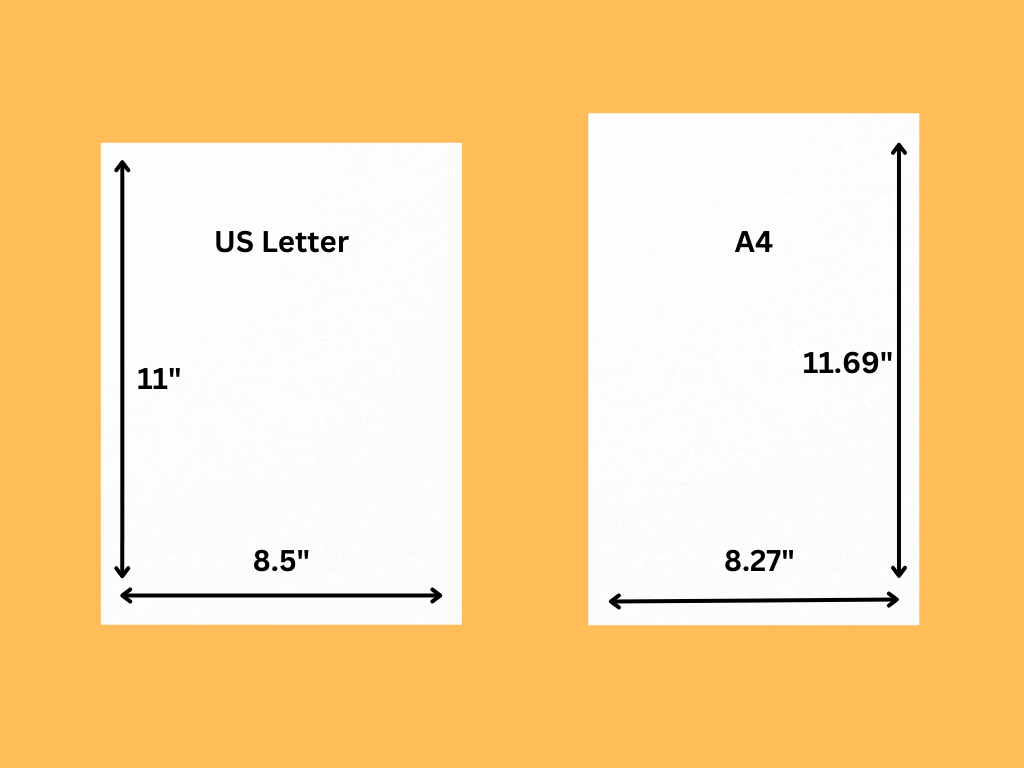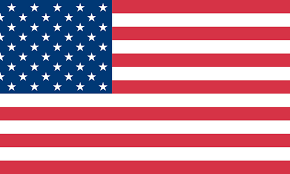A4 vs Letter: What Is the Difference?

Have you ever wondered why some papers look a bit different when you print or write on them? Well, it's all about the size – and that's what we're here to talk about. We'll break down the differences between A4 and Letter sizes, explain where and why they're used, and even introduce you to a nifty printer that can make your life a whole lot easier. So, if you're ready to unlock the secrets of paper sizes, let's dive right in!
What are the differences between Standard US paper sizes and ISO paper sizes?
North American Standard Sizes:
In North America, paper sizes are commonly known by letter designations, such as Letter Legal, and Tabloid or Ledger. US Letter paper is 8.5 inches wide and 11 inches long, which is about 216 mm by 279 mm. It's widely used for business documents, academic documents, letters, and reports.
ISO Paper Sizes:
The ISO paper size system, based on the A series, is widely used globally for printing and office applications. The A series ranges from A0 (largest) to A10 (smallest), with each size maintaining a consistent aspect ratio. The most commonly used size is A4 paper, which is more common internationally, is 210 mm wide and 297 mm long, about 8.27 inches by 11.69 inches. So, A4 is a bit narrower and longer compared to US Letter. Aside from the A series, the ISO system includes the B and C series as well. The B series is larger than the A series, while the C series is primarily used for envelopes.

What are A4 and US letter paper sizes used for?
Although the sizes have slight differences, they are commonly used for similar purposes. Both are frequently employed for printing documents such as letters, reports, memos, and invoices. They are also favored for business correspondence, including cover letters, contracts, and proposals. Job seekers often print their resumes on them when applying for positions. Additionally, they're utilized for creating brochures, flyers, and promotional materials due to their manageable size. Moreover, they find use in art and design for sketches, illustrations, and digital templates. Educators use them for worksheets, handouts, and educational materials. Though less common, they can also be used for printing photographs at home.
Differences between A4 and Letter size paper
| A4 paper | Letter paper | |
| Dimensions | 8.27" x 11.69" | 8.5" x 11" |
| Usage | International standard | United States, Canada, and Mexico |
| Applications | documents, letters, charts, graphs,reports, etc | business and academic documents |
What happens when I print US Letter on A4
If you try to print a paper meant for US Letter (the size your printer set by default) on A4 paper (which is a bit narrower and taller), parts of your document might be cut off on the sides. The way your document is set up, like how things are spaced out and arranged, could also get messed up. To make it look better when printing on A4, you need to change how your document is set up so that everything fits nicely on the smaller paper.
However, this issue won't be a problem when you use our portable A4 printer. It automatically shows you options to choose the paper size. You can easily set it up and then print without any hassle.
How can I print an A4 page on Letter size paper?
If you're printing a document in Word, just go through these steps:
Step 1: Display the Print settings in Word
Step 2: At the very bottom, click on “Scale to Paper Size"
Step 3: Click on the "Letter" option. Word will show in the print settings that the output will be scaled according to the target paper size.
If you want to share a document without it getting all wonky on different computers, try turning it into a PDF. It's like making a snapshot of your file, so the look stays the same no matter where you send it. When you use programs like Adobe Reader or Acrobat to open the PDF, they automatically adjust the size so everything fits right.
What type of printer can I use to print A4 and US letter size papers?
Common home printers, including inkjet and laser printers, are widely used for home and office printing. They can handle a wide range of paper sizes, including A4 and US Letter, and they utilize toner cartridges or ink to produce images and text.
Apart from that, the Munbyn A4 thermal printer offers a hassle-free printing solution for A4 or US letter size papers, catering especially to students, teachers, artists, home organizers, planners, and more. Now, you might be wondering what distinguishes it from your typical home printers. Here's why:
Portability: You can effortlessly fit it into your bag and take it anywhere. It weighs about the same as your iPad, so you won't need to worry about adding extra weight to your bag.
Cost-saving: Who doesn't appreciate saving money? This portable thermal printer operates on thermal technology, which means you no longer need to purchase ink or toner.
Time-saving: It's also a time-saver. Just think about how many times you've had to replace liquid ink cartridges when the ink level runs low; that won't be an issue with a thermal printer.
Wide utility: Thanks to its adaptable switchable size, printing a diverse range of documents is effortlessly accomplished. It is designed to print on thermal paper with widths of 216mm/210mm/107mm/77mm/57mm (corresponding to US letter/A4/4"/3"/2"), ensuring that tasks such as printing study schedules, recipes, calligraphy practice sheets, and daily meal plans become absolutely hassle-free.
Bluetooth connectivity: The best part? You can effortlessly connect it to both iOS and Android phones via Bluetooth, or utilize a USB connection for Windows systems whenever necessary.
Are you ready to experience a new level of convenience for your printing needs? Don't miss out on the opportunity to simplify your printing tasks and bring your ideas to life with the Munbyn A4 Portable Printer. Elevate your printing game today!

